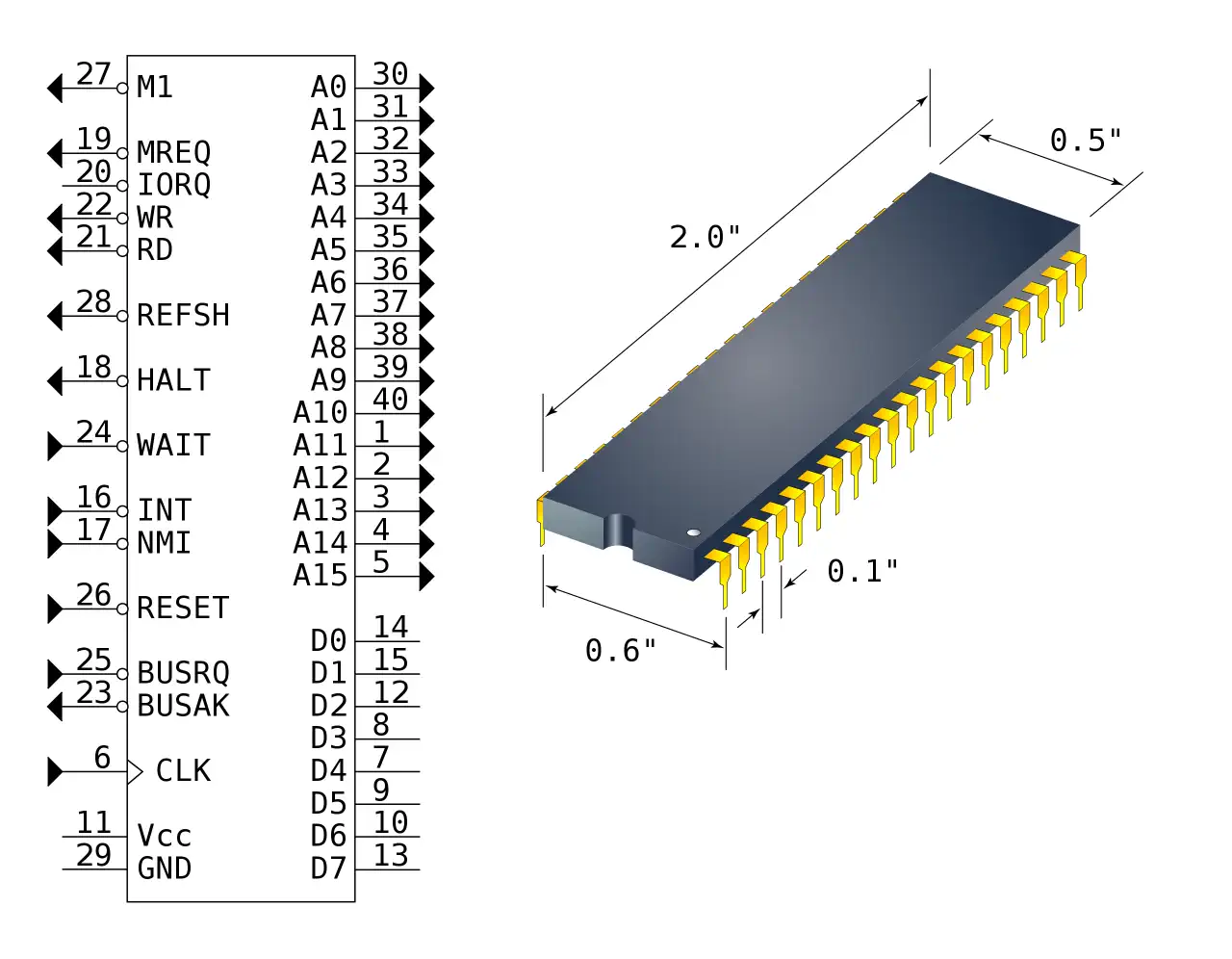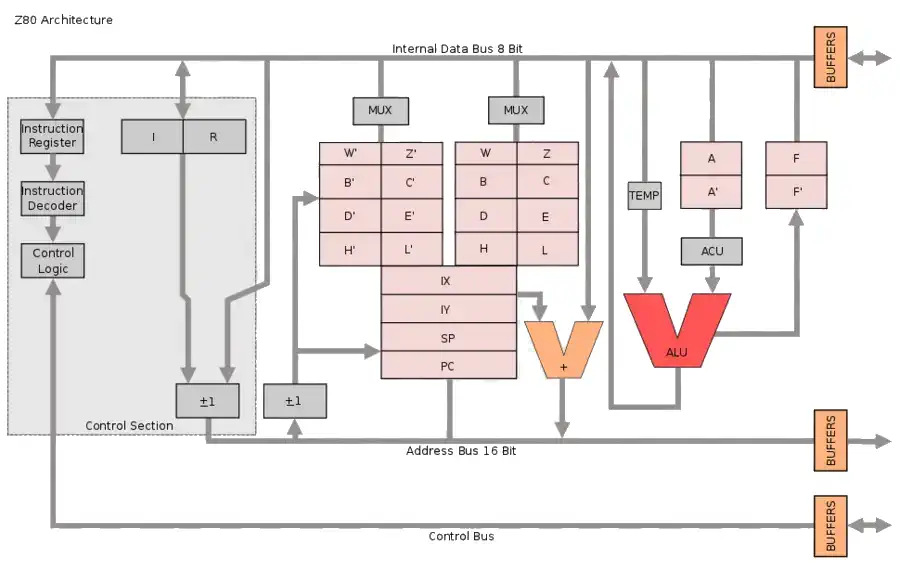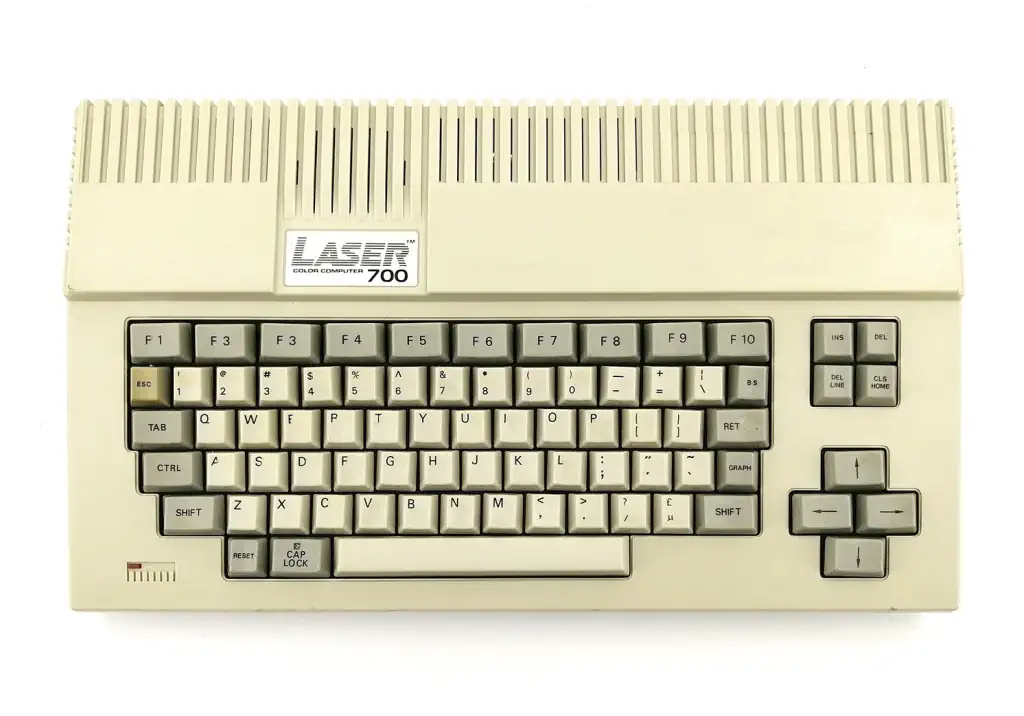VTech Laser 700
The Laser 700 from VTECH was released in 1985. It is essentially the same computer as the Laser 500, but with 128kByte of RAM. Like the 500, the computer was built around the Z80A architecture CPU, had 64kByte of RAM, and 32kByte of ROM containinng the Extended Microsoft BASIC. It had two text modes and 6 graphic modes. This computer was one of three launched by VTECH to compete directly with the MSX line of computers.
The keyboard was a qwerty full stroke keyboard, with 10 function keys at the top row, and a separate cursor key island. There were several expansion options:
- 64K/128K RAM Memory Expansion Module
- Centronics Printer Interface
- Joystick Interface
- Lightpen Interface
- Fast Cassette Interface
- RS232 Interface
- AD/DA Interface
- Chinese Card
- Floppy Disk Drive Interface
Video Modes
Text Modes
- 40x24 in 16 colors
- 80x24 in 2 colors
Graphics Modes
- 320x192 in 2 out of 16 colors
- 160x192 in 16 colors
- 160x92 in 16 colors
- 640x192 in 2 out of 16 colors
- 320x192 in 16 colors
- 160x192 in 16 colors
The RAM subsystem consists of 16 pieces of 64K x 1-bit Dynamic RAM. The RAM timing is provided by a VLSI Gate Array, together with LS257 multiplexer chips.

CPU View - Zilog Z80 Family
The Z80 quickly became popular in the personal computer market, with many early personal computers, such as the TRS-80 and Sinclair ZX80, using the Z80 as their central processing unit (CPU). It was also widely used in home computers, such as the MSX range, SORD, and the Amstrad CPC, as well as in many arcade games. Additionally, it was also used in other applications such as industrial control systems, and embedded systems. The Z80 was widely used until the mid-1980s, when it was gradually replaced by newer microprocessors such as the Intel 80286 and the Motorola 68000.
The Z80 microprocessor was developed by Zilog, a company founded by Federico Faggin in 1974. The Z80 was released in July 1976, as a successor to the Intel 8080. It was designed to be fully compatible with the 8080, but also included new features such as an improved instruction set, more powerful interrupts, and a more sophisticated memory management system.
The Z80 quickly became popular in the personal computer


RAM max: 128kB
ROM: 32 Sound Chip none Sound unknown Display Chip unknown Display 40x24 16 color text
80x24 mono text
160x192 in 16 colors
640x192 in 2 colors Best Text 80x24 Best Color 16 Colors Graphics 640x192 Sprites none System OS Microsoft BASIC Storage Optional Cassette, Disk Drive Original Price unknown

